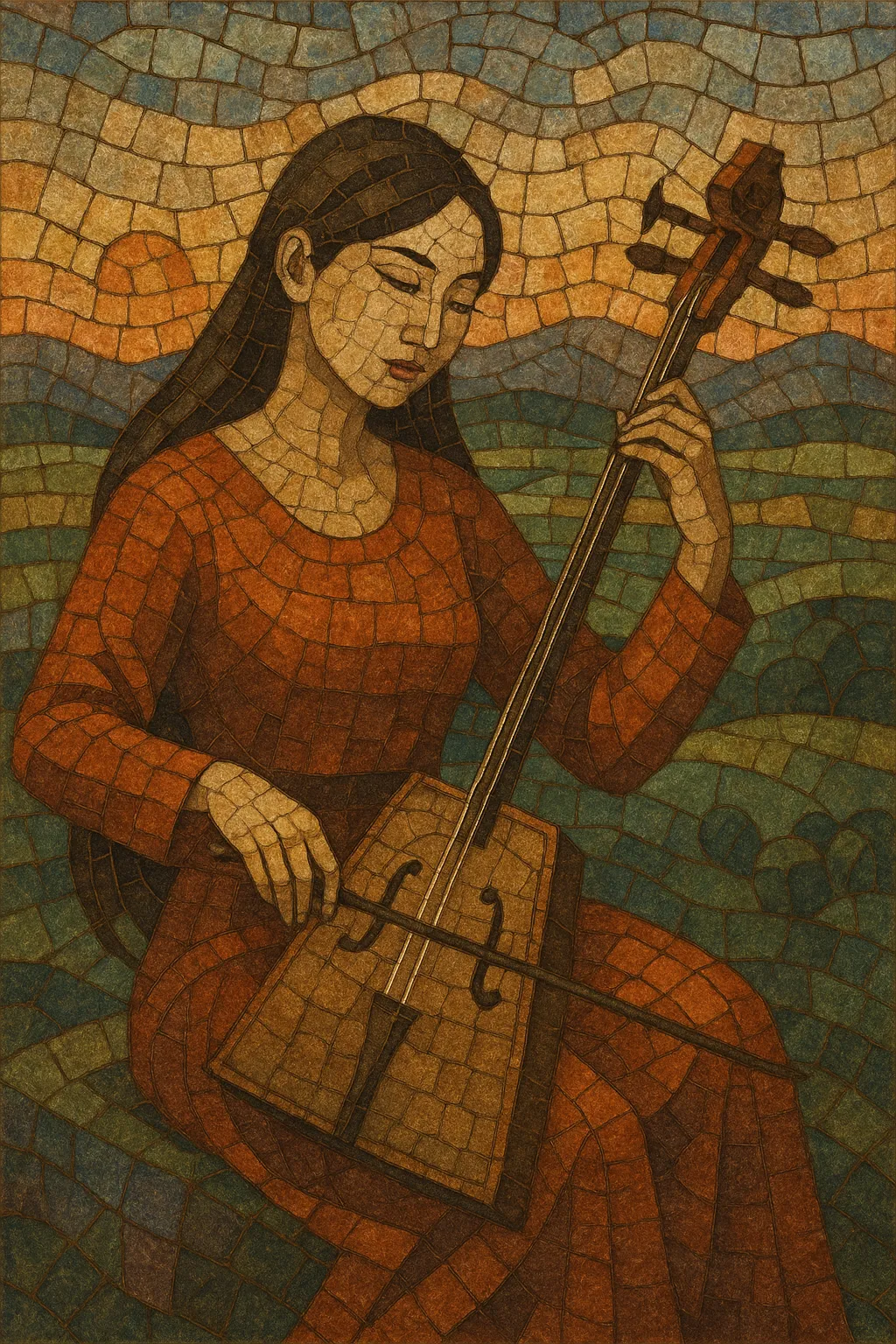Zohioliin duu (зохиолын дуу) literally means “authored/composed song” in Mongolian and refers to a repertoire of composed popular songs that sit between folk tradition and modern pop balladry.
The style blends Western light-music and pop orchestration with Mongolian melodic sensibilities and vocal technique, notably a broad, expressive vibrato, long sustained tones, and gentle portamento. Arrangements often feature strings, acoustic or clean electric guitar arpeggios, soft synthesizer pads, and occasionally traditional timbres such as the morin khuur (horsehead fiddle). Tempos are moderate, meters are commonly 4/4 or 3/4, and harmonies are diatonic and tonal.
Lyrically, songs focus on love, family, homeland, nature, and nostalgia, employing poetic imagery of the steppe and seasons. The overall mood tends to be sentimental and romantic, with memorable choruses designed for communal singing and radio play.
Zohioliin duu emerged as a distinct current in Mongolian light music during the late socialist period, when state ensembles, composers, and broadcasters nurtured a repertoire of authored songs separate from anonymous folk. The term highlights that these pieces are written by identifiable composers and lyricists, yet they preserve Mongolian melodic shapes and vocal aesthetics.
During the 1970s and 1980s, Mongolia’s professional music institutions, radio/TV studios, and light-music orchestras consolidated the style. Soviet estrada and European schlager provided models for arrangement, orchestration, and stage presentation, while Mongolian long-song phrasing and pentatonic touches informed melody and vocal delivery. The result was a polished, sentimental song form suited to mass media and state concerts.
After the 1990 democratic transition, a growing private music market, cassettes/CDs, and televised song festivals expanded the reach of zohioliin duu. The genre remained a staple of weddings, variety shows, and national celebrations, even as rock, hip hop, and electronic pop flourished. Many evergreen titles from the socialist period were re-recorded with modern production.
Today, zohioliin duu coexists with contemporary Mongolian pop and indie scenes. New compositions continue to appear, and classic songs are frequently covered. While production now incorporates digital tools and smoother mixing, the genre’s core—sentimental lyricism, soaring vocals, and approachable harmony—remains intact.


